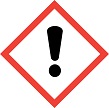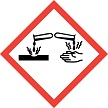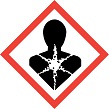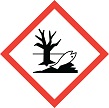Latest GHS Classification Results by the Japanese Government (edited by NITE)
GENERAL INFORMATION
REFERENCE INFORMATION
PHYSICAL HAZARDS
HEALTH HAZARDS
ENVIRONMENTAL HAZARDS
NOTE:
GENERAL INFORMATION
| Item | Information |
|---|---|
| CAS RN | 123-31-9 |
| Chemical Name | Hydroquinone |
| Substance ID | m-nite-123-31-9_v1 |
| Download of Excel format | Excel file |
REFERENCE INFORMATION
| Item | Information |
|---|---|
| Guidance used for the classification (External link) | To Guidance List |
| UN GHS document (External link) | To UN GHS document |
| FAQ(GHS classification results by the Japanese Government) | To FAQ |
| List of Information Sources (Excel file) | List of Information Sources |
| List of Definitions/Abbreviations | Definitions/Abbreviations |
| Sample Label by MHLW (External link) | To Workplace Safety Site (MHLW) |
| Sample SDS by MHLW (External link) | To Workplace Safety Site (MHLW) |
| OECD/eChemPortal (External link) | To OECD/eChemPortal (External link) |
| Hazard class | Classification | Pictogram Signal word |
Hazard statement (code) |
Precautionary statement (code) |
Rationale for the classification | Classification year (FY) | GHS Classification Guidance for the Japanese Government | |
|---|---|---|---|---|---|---|---|---|
| 1 | Explosives | Not classified (Not applicable) |
- |
- | - | There are no chemical groups associated with explosive properties present in the molecule. | FY2012 | GHS Classification Guidance by the Japanese Government (July, 2010) |
| 2 | Flammable gases | Not classified (Not applicable) |
- |
- | - | Solid (GHS definition) | FY2012 | GHS Classification Guidance by the Japanese Government (July, 2010) |
| 3 | Aerosols | Not classified (Not applicable) |
- |
- | - | Not aerosol products. | FY2012 | GHS Classification Guidance by the Japanese Government (July, 2010) |
| 4 | Oxidizing gases | Not classified (Not applicable) |
- |
- | - | Solid (GHS definition) | FY2012 | GHS Classification Guidance by the Japanese Government (July, 2010) |
| 5 | Gases under pressure | Not classified (Not applicable) |
- |
- | - | Solid (GHS definition) | FY2012 | GHS Classification Guidance by the Japanese Government (July, 2010) |
| 6 | Flammable liquids | Not classified (Not applicable) |
- |
- | - | Solid (GHS definition) | FY2012 | GHS Classification Guidance by the Japanese Government (July, 2010) |
| 7 | Flammable solids | Classification not possible |
- |
- | - | It is combustible (ICSC (J) (2001)), but the classification is not possible due to no data in the prescribed test. | FY2012 | GHS Classification Guidance by the Japanese Government (July, 2010) |
| 8 | Self-reactive substances and mixtures | Not classified (Not applicable) |
- |
- | - | There are no chemical groups present in the molecule associated with explosive or self-reactive properties. | FY2012 | GHS Classification Guidance by the Japanese Government (July, 2010) |
| 9 | Pyrophoric liquids | Not classified (Not applicable) |
- |
- | - | Solid (GHS definition) | FY2012 | GHS Classification Guidance by the Japanese Government (July, 2010) |
| 10 | Pyrophoric solids | Not classified |
- |
- | - | It is estimated that it does not ignite at normal temperatures from an autoignition temperature of 516 deg C (NFPA (14th, 2010)). | FY2012 | GHS Classification Guidance by the Japanese Government (July, 2010) |
| 11 | Self-heating substances and mixtures | Classification not possible |
- |
- | - | No data available. | FY2012 | GHS Classification Guidance by the Japanese Government (July, 2010) |
| 12 | Substances and mixtures which, in contact with water, emit flammable gases | Not classified (Not applicable) |
- |
- | - | The chemical structure of the substance does not contain metals or metalloids (B, Si, P, Ge, As, Se, Sn, Sb, Te, Bi, Po, At). | FY2012 | GHS Classification Guidance by the Japanese Government (July, 2010) |
| 13 | Oxidizing liquids | Not classified (Not applicable) |
- |
- | - | Solid (GHS definition) | FY2012 | GHS Classification Guidance by the Japanese Government (July, 2010) |
| 14 | Oxidizing solids | Not classified (Not applicable) |
- |
- | - | The substance is an organic compound containing oxygen (but not fluorine or chlorine) which is chemically bonded only to carbon or hydrogen. | FY2012 | GHS Classification Guidance by the Japanese Government (July, 2010) |
| 15 | Organic peroxides | Not classified (Not applicable) |
- |
- | - | Organic compounds containing no bivalent -O-O- structure. | FY2012 | GHS Classification Guidance by the Japanese Government (July, 2010) |
| 16 | Corrosive to metals | Classification not possible |
- |
- | - | Test methods applicable to solid substances are not available. | FY2012 | GHS Classification Guidance by the Japanese Government (July, 2010) |
| 17 | Desensitized explosives | - |
- |
- | - | - | - | - |
| Hazard class | Classification | Pictogram Signal word |
Hazard statement (code) |
Precautionary statement (code) |
Rationale for the classification | Classification year (FY) | GHS Classification Guidance for the Japanese Government | |
|---|---|---|---|---|---|---|---|---|
| 1 | Acute toxicity (Oral) | Category 4 |
 Warning |
H302 | P301+P312 P264 P270 P330 P501 |
Seven LD50 values for rats [390 mg/kg, 302 mg/kg, 323 mg/kg, 298 mg/kg (the above four, SIDS (Access on Apr. 2012)), 320 mg/kg, 743 mg/kg, 627 mg/kg (the above three, EHC 157 (1994))] are reported, six correspond to Category 4, and one corresponds to 3. Therefore, it was classified in Category 4, to which most correspond. Besides, test data on non-fasted animals were not adopted because fasted animals were normally used in the test. | FY2012 | GHS Classification Guidance by the Japanese Government (July, 2010) |
| 1 | Acute toxicity (Dermal) | Not classified |
- |
- | - | In 14-day repeated dermal administration tests with rats and mice, no deaths were observed in either animal species at the highest dose (rats 3,840 mg/kg/day, mice 4,800 mg/kg/day) (SIDS (Access on Apr. 2012)), and one dose exceeded the guidance value range. Therefore, it was classified as "Not classified" in the Classification JIS. | FY2012 | GHS Classification Guidance by the Japanese Government (July, 2010) |
| 1 | Acute toxicity (Inhalation: Gases) | Not classified (Not applicable) |
- |
- | - | Solid (GHS definition) | FY2012 | GHS Classification Guidance by the Japanese Government (July, 2010) |
| 1 | Acute toxicity (Inhalation: Vapours) | Classification not possible |
- |
- | - | No data available. | FY2012 | GHS Classification Guidance by the Japanese Government (July, 2010) |
| 1 | Acute toxicity (Inhalation: Dusts and mists) | Classification not possible |
- |
- | - | No data available. | FY2012 | GHS Classification Guidance by the Japanese Government (July, 2010) |
| 2 | Skin corrosion/irritation | Not classified |
- |
- | - | It is reported that in a test in which a 10% aqueous solution was applied to guinea pigs, there was slight irritation (EHC 157 (1994)), slight to moderate edema and moderate erythema were observed 24 hours after application of 0.25-1.0 g/kg to guinea pigs, but there were no skin reactions after that (SIDS (Access on Apr. 2012)), and an occlusive application test with rabbits resulted in the mean irritation score of 1.22 (1-4) and no irritation (IUCLID (2001)). Based on the above results, it was classified as "Not classified" in the Classification JIS (corresponding to Category 3 in UN GHS classification). Besides, in humans, it is described that use of 5% preparations of this substance for bleaching the skin is often accompanied by dermatosis, erythema, and burning (DFGMAK-Doc. 10 (1998)), and it is reported that in cases using 2% bleaching creams, there were four cases of leukoderma, which was not inflammatory, and a patch test in a 1% cream did not give a positive result after 72 hours (Initial Risk Assessment Report 114 (NITE, CERI, NEDO, 2008)). | FY2012 | GHS Classification Guidance by the Japanese Government (July, 2010) |
| 3 | Serious eye damage/eye irritation | Category 1 |
 Danger |
H318 | P305+P351+P338 P280 P310 |
It was classified in Category 1 because it is reported that the application of 100 mg to the conjunctival sac of rabbits led to corrosive damage (DFGMAK-Doc. 10 (1998)). Besides, it is reported that in a test in which crystalline powder of this substance was applied to the rabbit eye, erythema of the eyelid and nictitating membrane occurred, and erythema of the eyelid, orbit, and nictitating membrane persisted by 48 hours after application but was not observed after 14 days (SIDS (Access on Apr. 2012)). On the other hand, in humans, it is reported that there are cases of workers who developed eye irritation, damage to the corneal epithelium, etc., and corneal ulcer due to exposure to the dust of this substance and workers who had corneal and conjunctival pigmentation, corneal opacity, loss of vision, and astigmatism after long term exposure (Environmental Risk Assessment for Chemical Substances vol. 3 (Ministry of the Environment, 2004)). | FY2012 | GHS Classification Guidance by the Japanese Government (July, 2010) |
| 4 | Respiratory sensitization | Classification not possible |
- |
- | - | No data available. | FY2012 | GHS Classification Guidance by the Japanese Government (July, 2010) |
| 4 | Skin sensitization | Category 1 |
 Warning |
H317 | P302+P352 P333+P313 P362+P364 P261 P272 P280 P321 P501 |
It was classified in Category 1 because it was assessed as a strong sensitizer by showing a positive rate of 70% (7/10) in a maximization test with guinea pigs (OECD TG 406) (EHC 157 (1994)). Besides, other maximization tests with guinea pigs were conducted and resulted in a positive rate of 50% (5/10) (EHC 157 (1994)) or a strong sensitizer (EHC 157 (1994)). Furthermore, this substance is listed as a contact allergen in Contact Dermatitis (5th, 2011). | FY2012 | GHS Classification Guidance by the Japanese Government (July, 2010) |
| 5 | Germ cell mutagenicity | Category 1B |
 Danger |
H340 | P308+P313 P201 P202 P280 P405 P501 |
It was classified in Category 1B based on a positive result in a chromosomal aberration test with spermatocytes after intraperitoneal administration to mice (in vivo germ cell mutagenicity test) (EHC 157 (1994)) despite a negative result in a dominant lethal test by oral administration to rats (in vivo heritable germ cell mutagenicity test) (EHC 157 (1994)). And there are reports on positive results in a chromosomal aberration test with bone marrow cells after intraperitoneal administration to mice and a micronucleus test with bone marrow cells after oral administration to mice (Initial Risk Assessment Report 114 (NITE, CERI, NEDO, 2008)), and a positive result in a spot test by intraperitoneal administration to mice (EHC 157 (1994)) (all, in vivo somatic cell mutagenicity test). Besides, as for in vitro tests, an Ames test was negative (NTP DB (1979)), but it is reported that a micronucleus test with V79 cells was positive (IARC 71 (1991)), and a micronucleus test with human lymphocytes gave a positive result (IARC 71 (1999)). | FY2012 | GHS Classification Guidance by the Japanese Government (July, 2010) |
| 6 | Carcinogenicity | Category 2 |
 Warning |
H351 | P308+P313 P201 P202 P280 P405 P501 |
As for carcinogenicity assessment, ACGIH classified it in A3 (ACGIH (2008)), corresponding to Category 2, and IARC classified it in Group 3 (IARC 71 (1999)), corresponding to "Classification not possible." The category is different between the two, but it was classified in Category 2 by adopting the ACGIH's assessment, which was newer. Besides, in 2-year oral administration carcinogenicity tests with rats and mice, it is reported that there was some evidence of carcinogenicity for male and female rats based on marked increases in tubular cell adenomas of the kidney in males and increases in mononuclear cell leukemia in females (NTP TR 366 (1989)). On the other hand, as for mice, it is reported that there was no evidence of carcinogenicity for males and some evidence of carcinogenicity for females based on increases in hepatocellular neoplasms, mainly adenomas (NTP TR 366 (1989)). It was classified as Cat. 3; R40 in EU classification (EC-JRC (ESIS) (Access on Apr. 2012)). | FY2012 | GHS Classification Guidance by the Japanese Government (July, 2010) |
| 7 | Reproductive toxicity | Not classified |
- |
- | - | In a two-generation reproductive test by oral administration to rats (OECD TG 416), parent animals showed tremor and reduced weight gain at or above 50 mg/kg/day, but there were no abnormalities in fertility such as male and female fertility index, and no anomalies were observed in the number of live pups, sex ratio, body weight until weaning, etc. in offspring (Initial Risk Assessment Report 114 (NITE, CERI, NEDO, 2008)). On the other hand, in tests by oral administration to pregnant rats and rabbits during the organogenesis period (OECD TG 414), in rats, maternal animals in the 300 mg/kg/day group showed reduced weight gain during treatment, but there were no abnormalities in numbers of corpus luteum verum, implantations, resorptions, and live fetuses, and fetal sex ratio and so on, and no external, visceral, or skeletal malformations were observed in fetuses at the same dose (Initial Risk Assessment Report 114 (NITE, CERI, NEDO, 2008)). Also, in rabbits, maternal animals showed reduced body weight gain at 150 mg/kg/day, but the examination of fetuses revealed no statistically significant changes in the incidences of external, visceral, or skeletal malformations at 150 mg/kg/day (Initial Risk Assessment Report 114 (NITE, CERI, NEDO, 2008)). Because no adverse effects on sexual function/fertility or development of offspring were found in the two-generation reproductive test and the developmental toxicity tests above, it was classified as "Not classified." | FY2012 | GHS Classification Guidance by the Japanese Government (July, 2010) |
| 8 | Specific target organ toxicity - Single exposure | Category 1 (central nervous system) |
 Danger |
H370 | P308+P311 P260 P264 P270 P321 P405 P501 |
The main symptoms of intoxication reported in humans were neurological ones, including tremors, convulsions, loss of reflexes, and coma (EHC 157 (1994), DFGMAK-Doc. 10 (1998)). On the other hand, in an acute oral toxicity test with rats (LD50 value: 627-743 mg/kg), death occurred during a tonic spasm (EHC 157 (1994)), and in an acute oral toxicity test with dogs (LD50 value: 200 mg/kg), hyperexcitability, tremors, convulsions, incoordination of the hindlimbs, etc. are reported (EHC 157 (1994)). As above, in addition to neurological symptoms due to exposure in humans, signs showing effects on the central nervous system were found in animal tests, especially in dogs, the symptoms occurred at the dose corresponding to the guidance values for Category 1. Therefore, it was classified in Category 1 (central nervous system). Besides, single oral administration to F344 rats caused nephrotoxic effects, but because there is the knowledge that no nephrotoxic effects were observed in SD rats or B6C3F1 mice (DFGMAK-Doc. 10 (1998)), kidney lesions in rats were not used for the rationale for classification. | FY2012 | GHS Classification Guidance by the Japanese Government (July, 2010) |
| 9 | Specific target organ toxicity - Repeated exposure | Category 2 (kidney, liver) |
 Warning |
H373 | P260 P314 P501 |
In a 15-month oral administration test with rats, increased severity of nephropathy was seen only in males at or above 25 mg/kg/day (NTP TR 366 (1989)), and in a 13-week oral administration test with rats, toxic nephropathy characterized by tubular cell degeneration in the renal cortex was observed in males at 200 mg/kg/day and females at or above 100 mg/kg/day (NTP TR 366 (1989)). From the above, because 25 and 100 mg/kg/day corresponds to the guidance values for Category 2, it was classified in Category 2 (kidney). And in 15-month or 2-year oral administration tests with mice, increased incidences of anisokaryosis, syncytial alteration, and basophilic foci were found in the liver at 100 mg/kg/day, which corresponds to guidance values for Category 2 (NTP TR 366 (1989)). Therefore, it was classified in Category 2 (liver). | FY2012 | GHS Classification Guidance by the Japanese Government (July, 2010) |
| 10 | Aspiration hazard | Classification not possible |
- |
- | - | No data available. | FY2012 | GHS Classification Guidance by the Japanese Government (July, 2010) |
| Hazard class | Classification | Pictogram Signal word |
Hazard statement (code) |
Precautionary statement (code) |
Rationale for the classification | Classification year (FY) | GHS Classification Guidance for the Japanese Government | |
|---|---|---|---|---|---|---|---|---|
| 11 | Hazardous to the aquatic environment Short term (Acute) | Category 1 |
 Warning |
H400 | P273 P391 P501 |
It was classified in Category 1 from 96-hour LC50 = 0.044 mg/L for fish (Pimephales promelas) (Initial Risk Assessment (NITE, CERI, NEDO, 2008)). | FY2012 | GHS Classification Guidance by the Japanese Government (July, 2010) |
| 11 | Hazardous to the aquatic environment Long term (Chronic) | Category 1 |
 Warning |
H410 | P273 P391 P501 |
If chronic toxicity data are used, then it is classified in Category 1 due to being rapidly degradable (readily biodegradable (a 2-week degradation rate by BOD: 70%) (Biodegradation and Bioconcentration Results of Existing Chemical Substances under the Chemical Substances Control Law, 1975)), 72-hour NOEC = 0.0015 mg/L for algae (Pseudokirchneriella subcapitata) (Environmental Risk Assessment for Chemical Substances Vol. 10 (Ministry of the Environment, 2012)), and 21-day NOEC = 0.003 mg/L for crustacea (Daphnia magna) (Environmental Risk Assessment for Chemical Substances Vol. 10 (Ministry of the Environment, 2012)). If acute toxicity data are used for a trophic level for which chronic toxicity data are not obtained, then it is classified as "Not classified" due to being rapidly degradable (readily biodegradable (a 2-week degradation rate by BOD: 70%) (Biodegradation and Bioconcentration Results of Existing Chemical Substances under the Chemical Substances Control Law, 1975)), and a low bioaccumulation estimate (log Kow = 0.59 (PHYSPROP Database, 2009)), despite 96-hour LC50 = 0.044 mg/L for fish (Pimephales promelas) (Initial Risk Assessment (NITE, CERI, NEDO, 2008)). By drawing a comparison between the above results, it was classified in Category 1. |
FY2012 | GHS Classification Guidance by the Japanese Government (July, 2010) |
| 12 | Hazardous to the ozone layer | Classification not possible |
- |
- | - | This substance is not listed in the Annexes to the Montreal Protocol. | FY2012 | GHS Classification Guidance by the Japanese Government (July, 2010) |
NOTE:
|